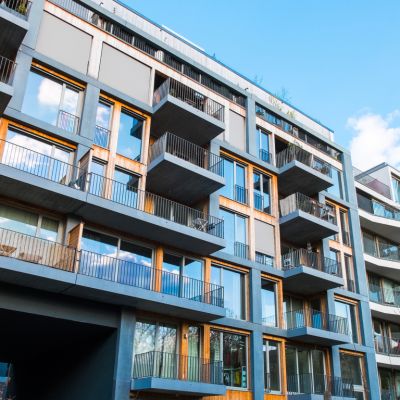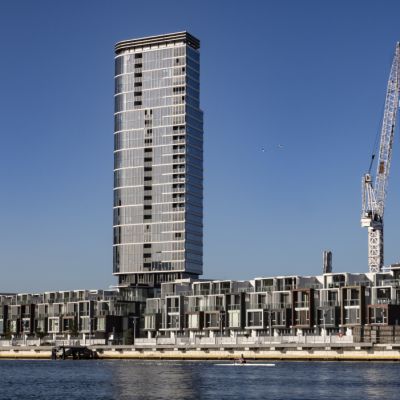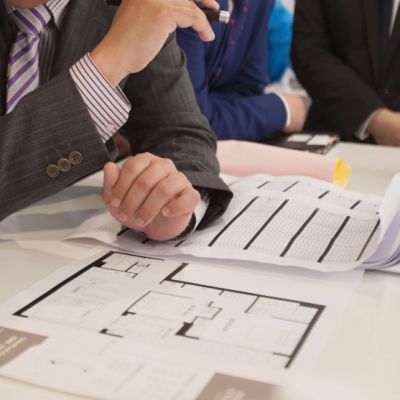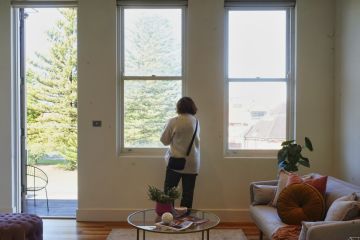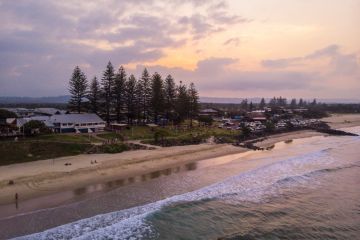How to find suburbs that have an undersupply of apartments
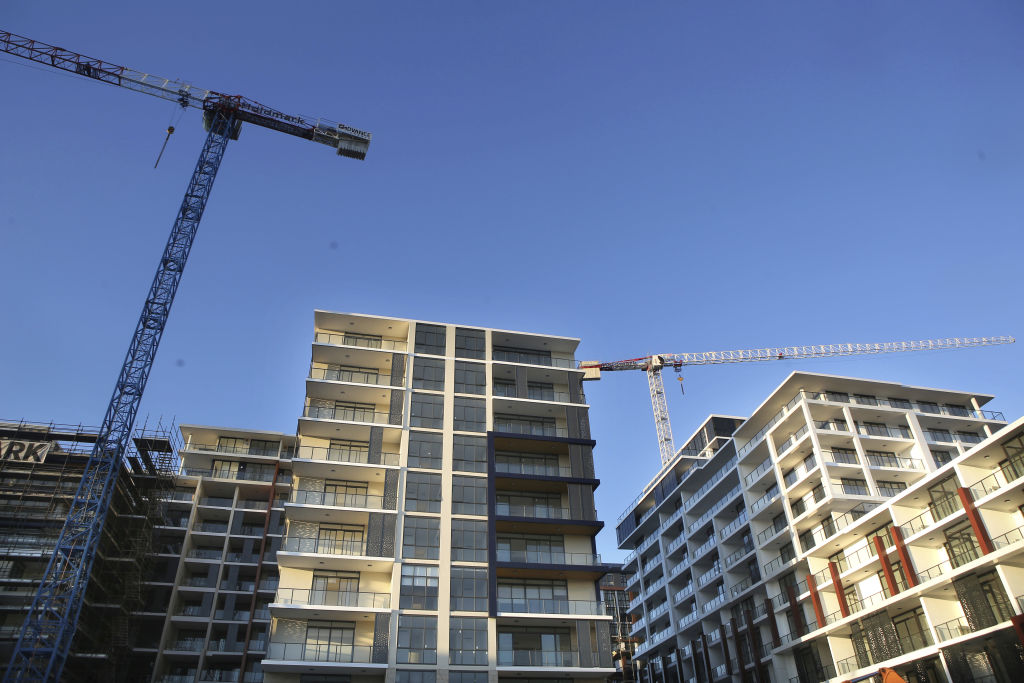
Looking to buy a new apartment, but nervous about too many nearby unit developments dragging down its resale value?
It’s important then to choose an area with a limited number of new apartments, or an undersupply, so competition isn’t as fierce when it comes time for you to re-sell.
There are many methods for pinpointing suburbs with less new stock. “The easiest way is probably visiting a suburb you like the look of, and then counting the cranes,” says David Poppleton, director of marketing and sales at the world’s biggest developer Country Garden.
“If everywhere you look, there are construction sites and work going on, and you can see lots of new buildings going up, then you know there might be a lot of new supply coming online in the next year or two.”
Take a look at supply
The amount of medium to high-density development in different local government areas can be checked using statistics published by demographic resource centre .id, which analyses trends based on results from the Census.
It found that apartment development in Sydney is at its lowest level in Camden with just 7.1 per cent of its housing stock made up of medium to high-density homes, the Blue Mountains with 7.5 per cent, the Hills district with 17. 9 per cent, then Penrith at 19.2 per cent and Blacktown with 21.5 per cent.
At the other end of the scale, with the most high-rise, is Sydney with a medium to high-density stock of 96.3 per cent, North Sydney with 89.2 per cent, Waverley at 82.2 per cent, Woollahra at 78.9 per cent and Randwick at 73.5 per cent.
According to the NSW Government’s Metropolitan Housing Monitor too, over the past five years to May 2019, the highest number of apartments have been delivered in Sydney (18,755), Parramatta (16,791), Bayside (11,703), Ryde (8,537) and Canterbury-Bankstown (7794).
For the future, it also pinpoints hotspots coming up, where the highest number of development approvals have been granted in the 12 months to May 2019 for each housing type.
It reveals, for example, that Parramatta is the area with the most significant number of high-density approvals, at 4041, and with 249 medium-density approvals. Blacktown has had 1154 high rise apartments approved over the same period, and 642 medium and lower rise units.
Liverpool closely follows with 1034 high rise approvals and the go-ahead for 386 medium-density homes, and then The Hills has 859 high-density homes coming up and 346 medium.
Keep an eye on demand
But at the same time, these figures have to be studied in the context of emerging demand, advises Domain analyst Eliza Owen.
“You might think there’ll be an oversupply of new development at one point in time, with a lot of rezoning and development applications as a result,” she said. “But that’s usually based on projections of population growth for parts of Sydney, so it’s being built in anticipation.”
There might be a lot of supply on its way but, if there’s enough demand to mop it up, then there could still be an undersupply in the future.
“Areas like Canterbury-Bankstown and Parramatta are set to see a lot of migration, which is why developers are positioning themselves to deliver a lot of stock there,” Owen said. “You might have the Melrose Park development in the north-west between Ryde and Parramatta with 10,000 units, but there’s expected to be four times that figure needed in the next 20 years.”
| Note: Medians are based on sales for the year to September. Source: Domain. | ||
| Unit median price growth | ||
| Suburb | Median Price | YoY Change |
| Haymarket | $1,195,000 | 18.90% |
| Kellyville | $834,000 | 18.30% |
| Newport | $865,000 | 9.10% |
| Bellevue Hill | $1,200,004 | 7.90% |
| Gordon | $940,000 | 6.20% |
| Forest Lodge | $1,047,500 | 4.90% |
| Leichhardt | $782,000 | 4.30% |
| Kirrawee | $756,000 | 4.30% |
| Sydney | $1,051,000 | 3.80% |
| Potts Point | $845,000 | 3.00% |
| Croydon | $751,500 | 2.90% |
| Erskineville | $851,500 | 1.90% |
| Auburn | $560,000 | 1.80% |
| Burwood | $835,000 | 1.30% |
| North Ryde | $682,560 | 0.90% |
| Newtown | $660,000 | 0.80% |
| Mascot | $917,089 | 0.20% |
Demand versus supply
Another way of figuring out the big picture is to look at days on market, as that accurately shows how long properties take to sell. It can also indicate whether it may be proving more difficult to sell, which then suggests there could be more supply than demand.
In a special study based on Domain Group figures, the areas of Sydney where the apartment market is tightest, with the least number of days on market are Narrabeen, with 25 days, Brookvale with 35, Neutral Bay with 40, and Cremorne and Coogee, both with 61 days.
Over the 12 months to September 30, 2019, the numbers of days on market for apartments in Narrabeen, Brookvale and Coogee have further fallen from 39, 52 and 62 respectively, showing apartments are even more in demand than they were this time last year.
“Days on market is a good proxy for showing both the demand and supply for units,” said Owen. “Some areas have units sitting on the market much longer, but then again, they may be markets where apartment-living isn’t so common.”
The Sydney suburbs with units that currently stay the most days on market are Cabramatta (218 days), Warwick Farm (216), Zetland (196), Homebush West (188), and Wentworthville (182).
The next ring
As a rough rule-of-thumb, it can be helpful to focus on the next ring out of Sydney from the inner ring, believes the CEO of the Urban Taskforce Australia, Chris Johnson.
“People should look for good-quality suburbs on the next rank,” he said. “Obviously, places like the inner city, Green Square, Erskineville and Marrickville are pretty well-supplied, but you should go out a bit further, around Summer Hill and Ashfield, Auburn and Strathfield.
“Then there’s potential as well along La Perouse, out past the University of NSW, which is a bit of an undiscovered area in a way, but still surprisingly close to the CBD.”
Ian Bennett, director of project marketing at Colliers International, agrees, similarly favouring Leichhardt, Five Dock, Drummoyne and Dulwich Hill.
“There has been some new development, but most of it is now sold with only a few resales or rentals,” he said. “There’s also some development coming up, but it’s mostly smaller, boutique stuff.”
While the eastern suburbs have lots of apartments, it’s still massively under-supplied, he believes, with development approvals harder to clinch, and the process slow. It’s the same for the Lower North Shore, with only a few small boutique developments being planned for Neutral Bay, Mosman, Cammeray and North Sydney. “The biggest is 22 apartments,” he said.
There are also severe shortages of larger, three-bedroom family apartments, with amalgamations coming back into vogue. Five took place at the new development Woolooware Bay in Cronulla recently, reports Mr Bennett, one with a record value for the area of $3.6 million.
There’s also an undersupply generally in Sydney of penthouses, which can really hold their value. “We’ve seen them go for good prices, which shows people will pay the money for them if there’s something unique about them,” Mr Bennett said.
“There’s also not a lot of townhouse product in the market at the moment. We always call they’re the missing middle because they’re half-way between a house and an apartment. There’s definitely demand for them, but hardly any stock around.”
The nature of areas
Older established areas are usually less likely to have too many apartments because there might be more demand for larger homes on big blocks or high-end apartments in small boutique buildings. Rezoned areas, in contrast, like Green Square, Pyrmont and Rhodes are often earmarked for high-density development.
Wealthier councils too may be better at resisting development than those in less affluent areas, says Ms Owen. “At the end of the day, if you’re trying to work out where would be a good place to buy an apartment, you need to go and get a feel for the area,” she said.
We recommend
We thought you might like
States
Capital Cities
Capital Cities - Rentals
Popular Areas
Allhomes
More
